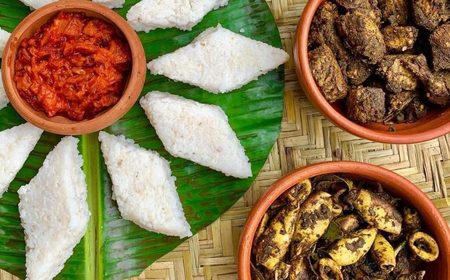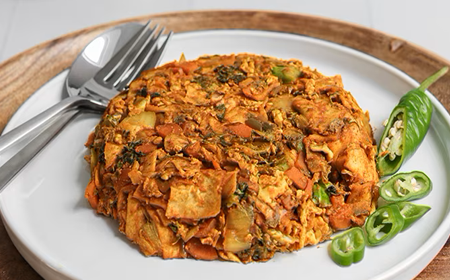
Sri Lankan Foods
Sri Lankan cuisine is a rich tapestry of flavors and aromas, influenced by the island’s diverse culture and history. Key ingredients include coconut, rice, and a variety of spices. Signature dishes like hoppers (bowl-shaped pancakes), kottu roti (chopped flatbread stir-fry), and fish ambul thiyal (sour fish curry) showcase the unique culinary traditions.
Sri Lankan food is known for its bold use of spices, which create complex and vibrant tastes that reflect the country’s tropical and multicultural heritage.
Cooking styles and techniques of Sri Lanka
Sri Lankan cooking styles emphasize aromatic spices, coconut milk, and fresh ingredients. Techniques include tempering spices, slow cooking, and roasting to enhance flavors. Curries are central, often made with fish, meat, or vegetables, accompanied by rice or flatbreads. String hoppers, hoppers, and kottu are staple dishes, showcasing the diversity of Sri Lankan cuisine.
- Sri Lankan cooking uses aromatic spices like cinnamon, cardamom, and curry leaves.
- Coconut milk is commonly used in curries to add richness.
- Temperings of mustard seeds, cumin, and fenugreek are essential in many dishes.
- Sri Lankan cuisine includes both slow-cooked curries and quick stir-fries.
- String hoppers and hoppers are traditional dishes often served with curries.


Since ancient times, traders from all over the world who came to Sri Lanka brought their native cuisines to the island, resulting in a rich diversity of cooking styles and techniques. The island nation’s cuisine mainly consists of boiled or steamed rice served with curry. This usually consists of a “main curry” of fish, chicken, pork or mutton (typically goat), as well as several other curries made with vegetables, lentils and even fruit curries. Side-dishes include pickles, chutneys and “sambols”. The most famous of these is the coconut sambol, made of ground coconut mixed with chili peppers, dried Maldive fish and lime juice. This is ground to a paste and eaten with rice, as it gives zest to the meal and is believed to increase appetite. Another well-known rice dish is kiribath, meaning “milk rice.” In addition to sambols, Sri Lankans eat “mallung”, chopped leaves mixed with grated coconut and red onions. Coconut milk is found in most Sri Lankan dishes to give the cuisine its unique flavor.
Sri Lankan people use spices liberally in their dishes and typically do not follow an exact recipe: thus, every cook’s curry will taste slightly different. Furthermore, people from different regions of the island (for instance, hill-country dwellers versus coastal dwellers) traditionally cook in different ways while people of different ethnic and religious groups tend to prepare dishes according to their customs.






